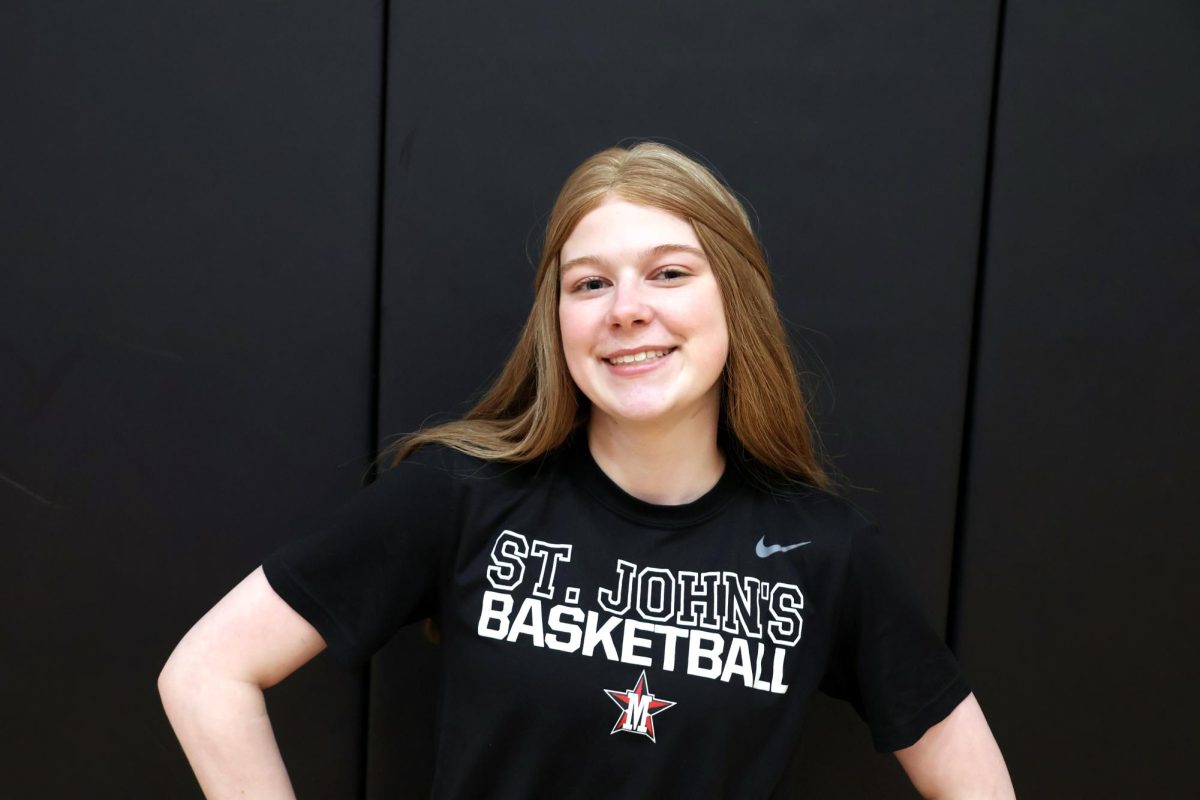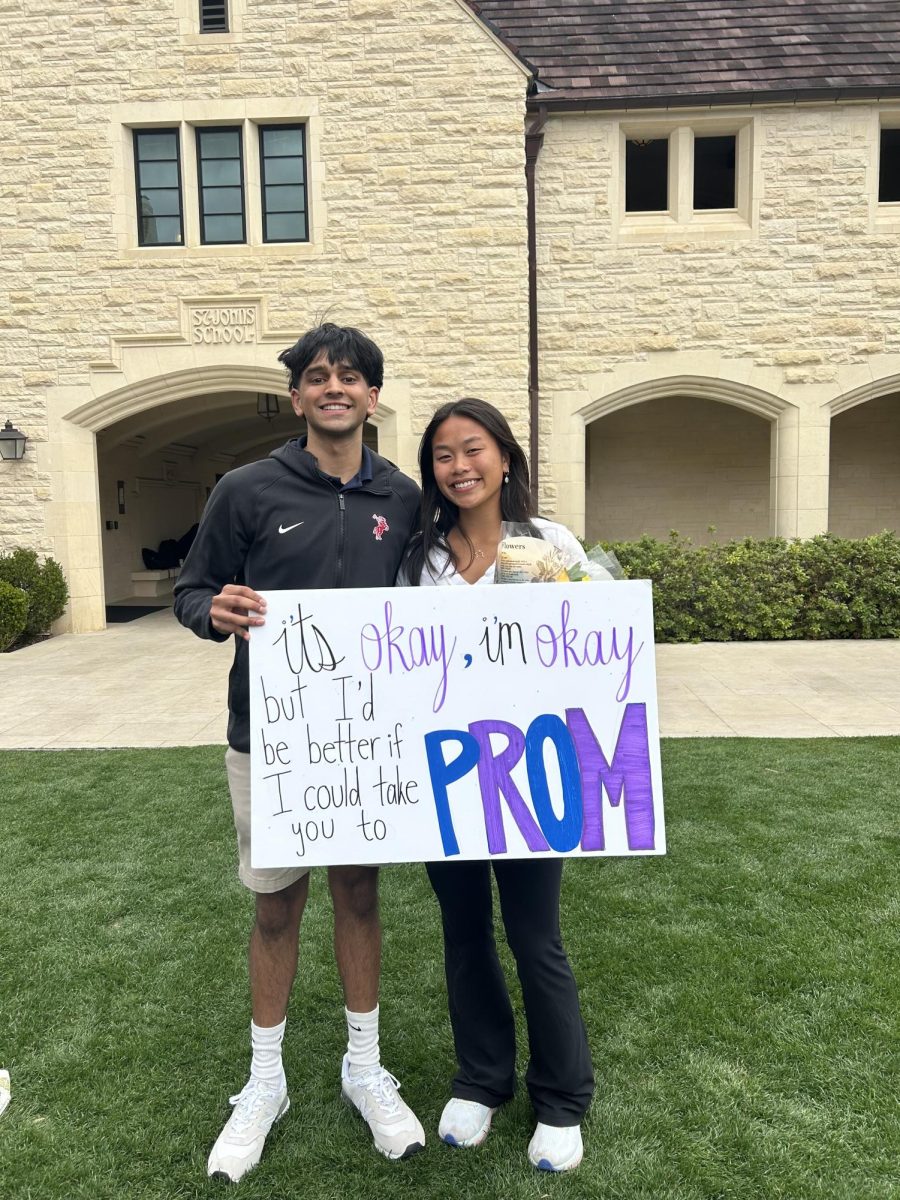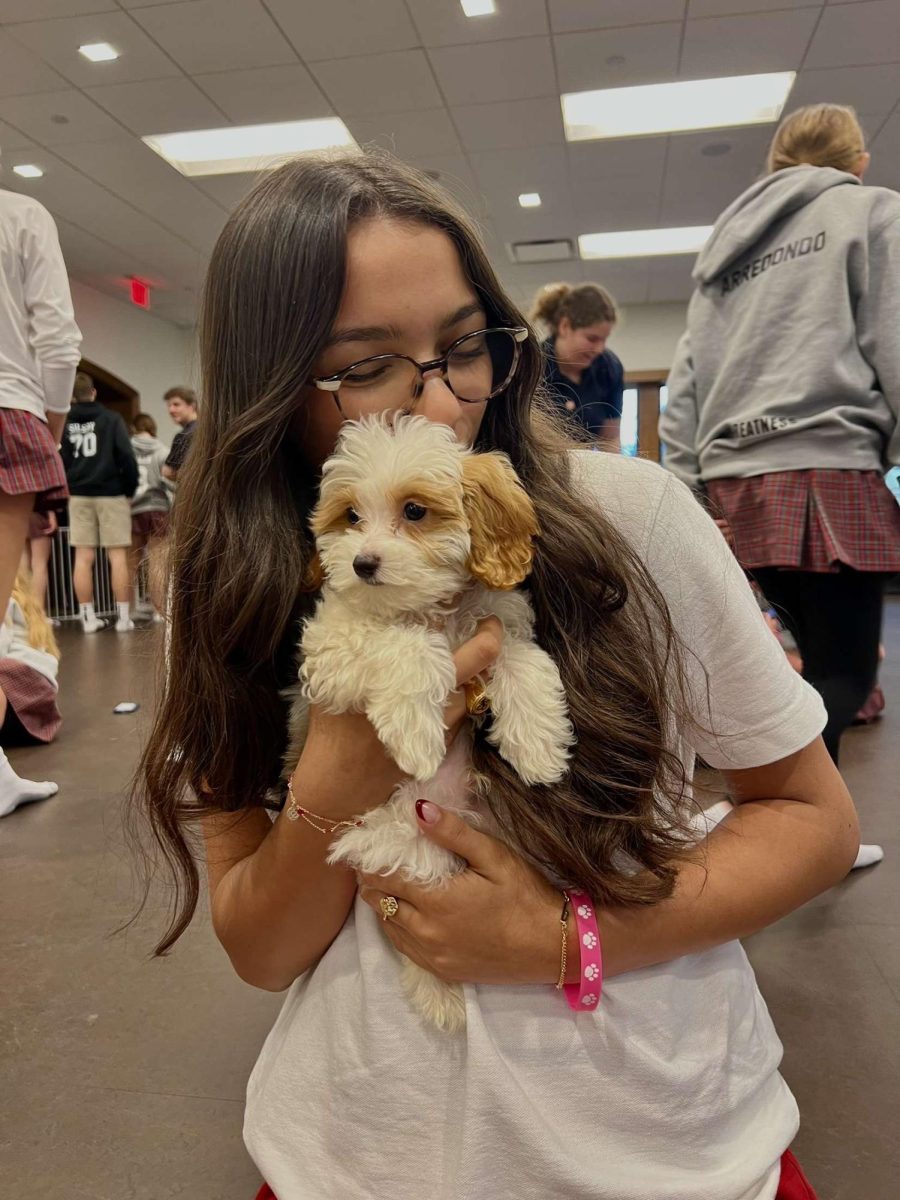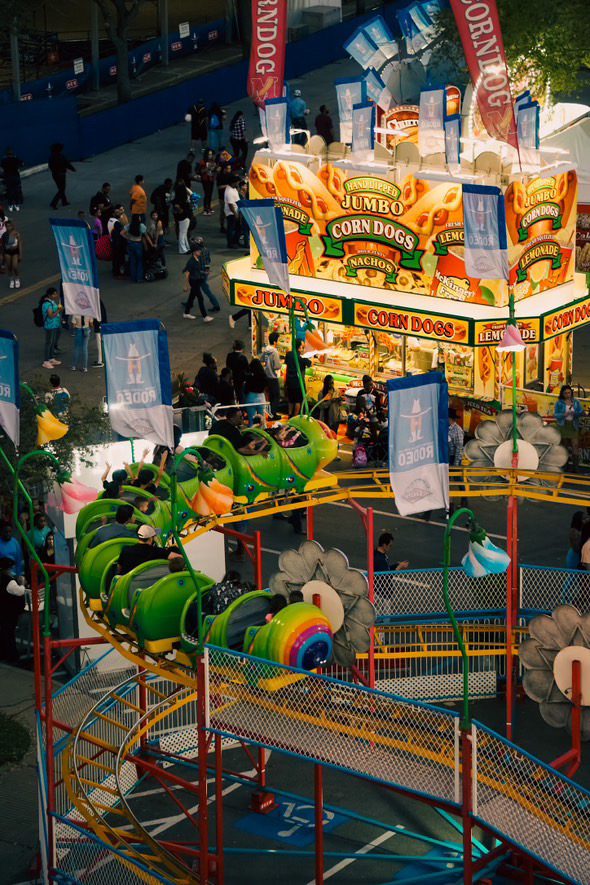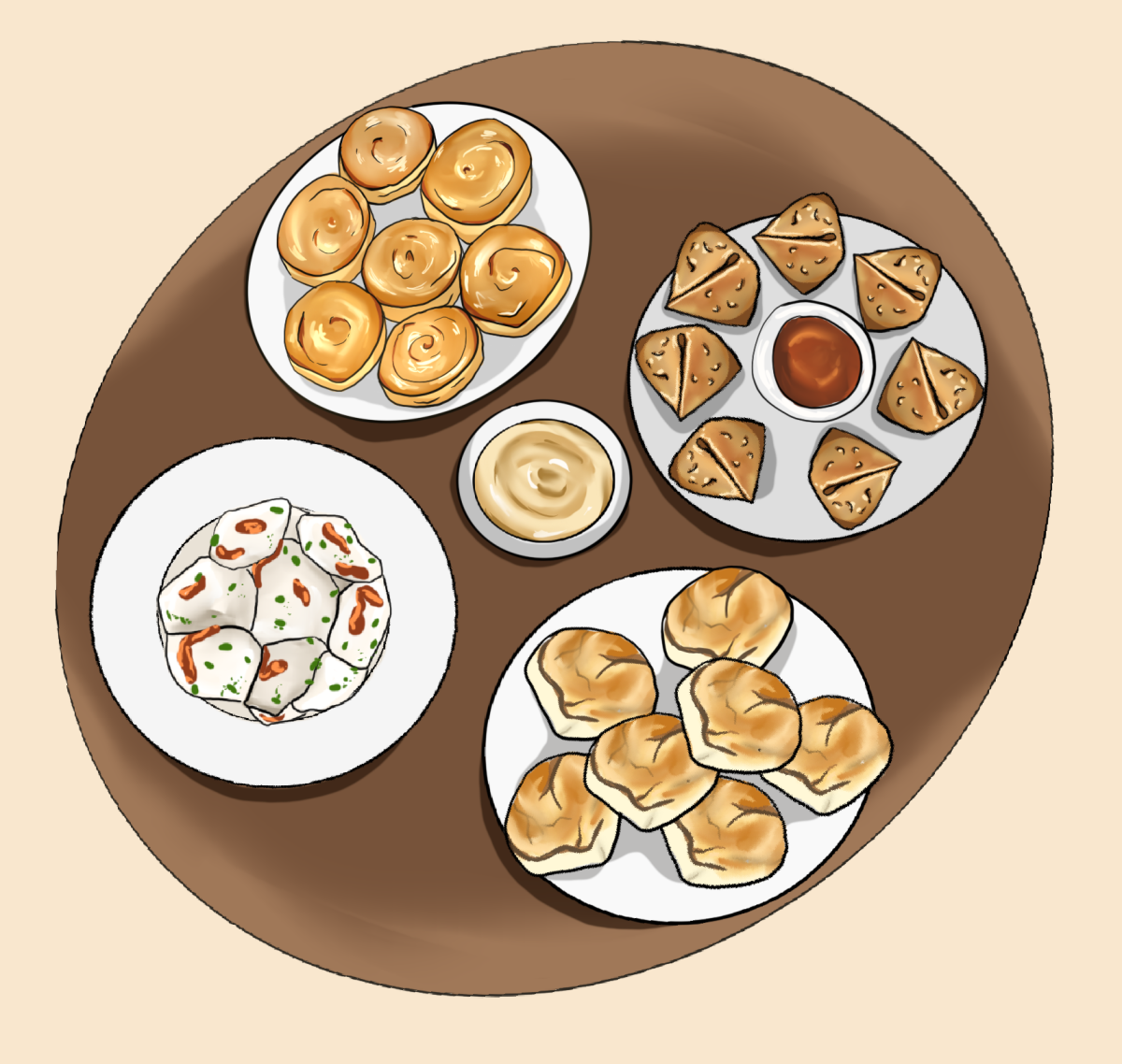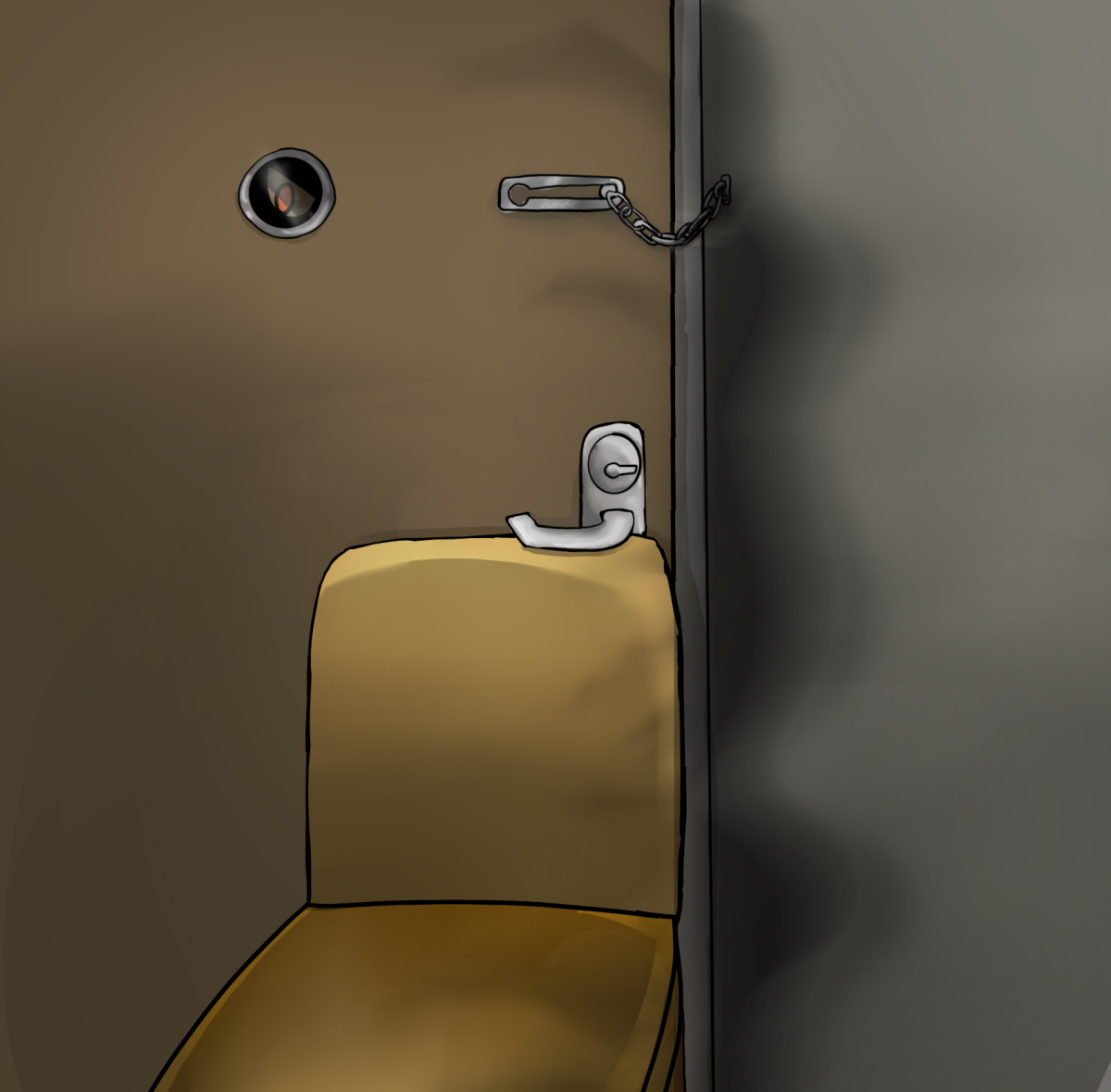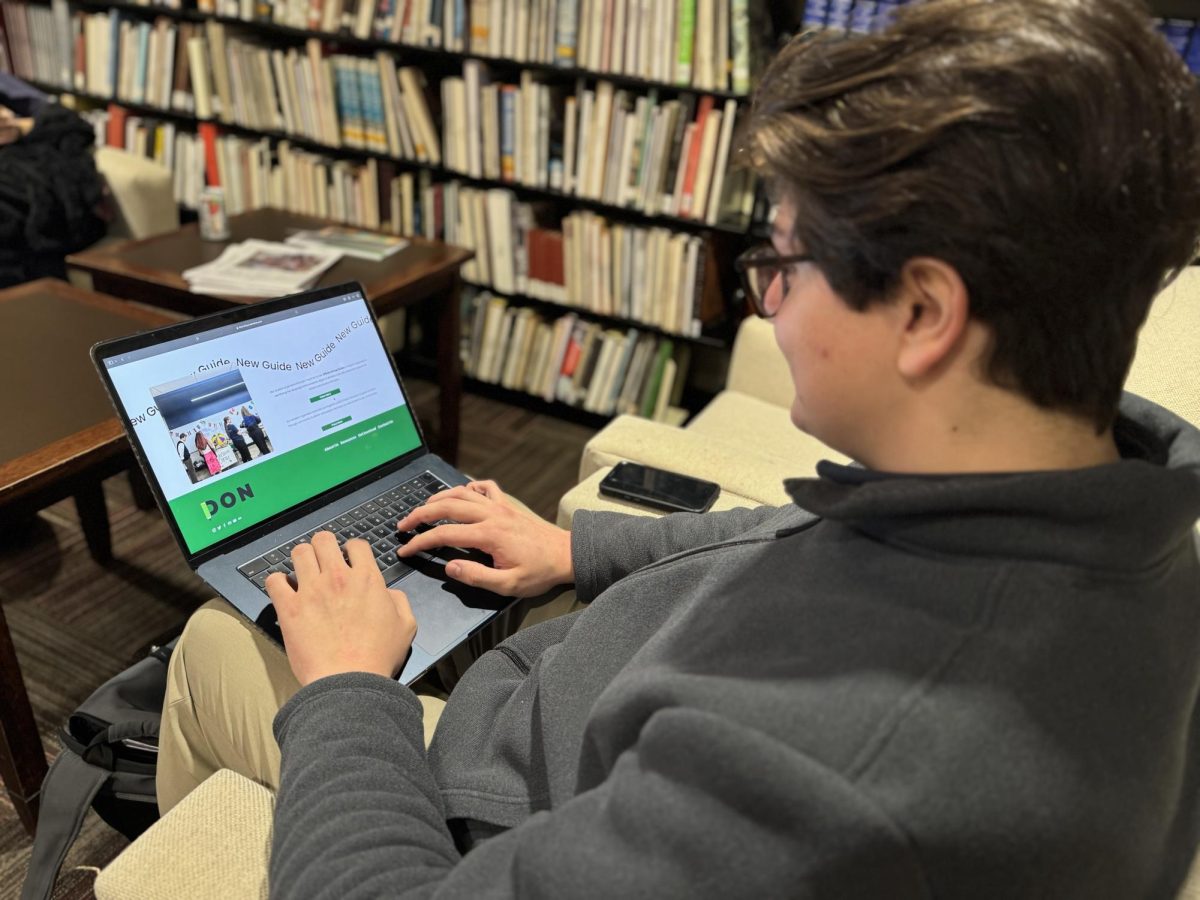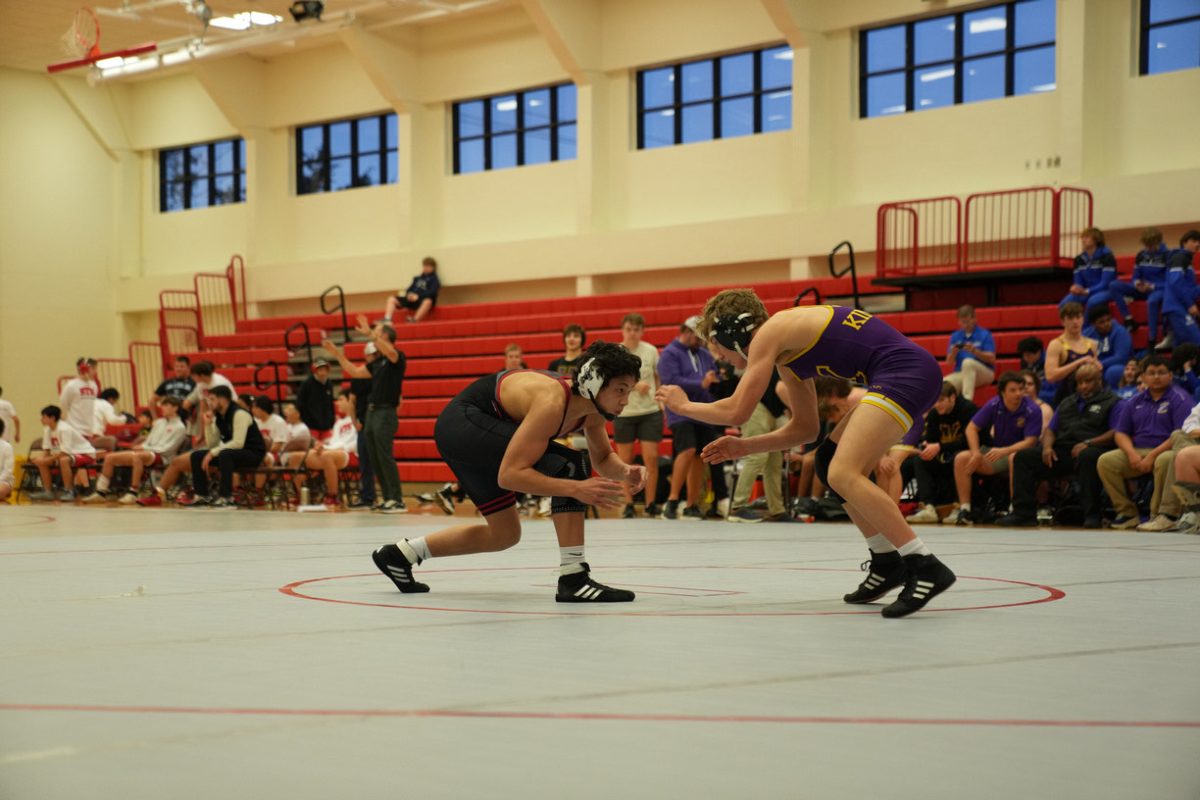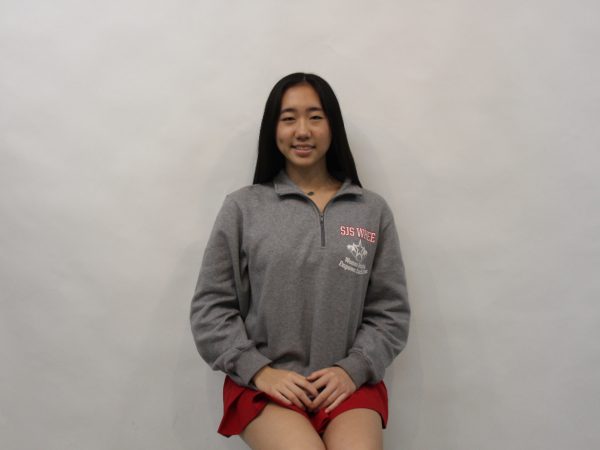As Angela Ma walked to Flores for lunch, giant stacks of colorful, abstract mounds caught her eye. Located in the Glassell Gallery, these boxy creations were part of the School’s annual Artist in Residence exhibition, which displayed works by local artist Rahul Mitra from March 24 to April 11.
Born in Hyderabad, India, Mitra’s passion for art blossomed when he learned to draw stick figures on his living room table at the age of four. He slowly transitioned to watercolors, a more affordable medium. Mitra was intrigued by other styles of painting and art but never had the opportunity to experiment until he moved to the United States in his early twenties.
When he was younger, Mitra made art not just to display in galleries but rather out of passion. At the same time, the artist also enjoyed science. After moving to Houston, Mitra worked at the Monroe and Dunaway Anderson Cancer Center and eventually became the program director of its RNA center. In addition, he helped establish several cancer centers, including a non-coding RNA center. There, he worked as program director, playing a pivotal role in the development of a drug to treat ovarian cancer and mentorship of graduate students and new faculty.
The statistical data Mitra collected as a scientific researcher allowed him to determine the most relevant and relatable themes for his art.
Mitra’s signature pieces are his box cities.
“I grew up fairly poor and lived in a small house. Looking around, everything looks like a box. If you stand on a hill and look, it’s boxes, boxes, boxes, boxes,” Mitra said. “No matter where you go in the world, there are always buildings that look like boxes.”

When he lived in India as a teenager, Mitra wanted to make his own creations but lacked the ability to buy materials. Instead, the young artist hunted for spare parts on the streets and repurposed them into art. Mitra’s idea to create box cities from cardboard boxes evolved from his past experiences, turning everyday items into artwork. He visited slums around the world and collected discarded cardboard boxes and worked with locals to create the ephemeral Box City installations. This project is Mitra’s favorite to date.
“It’s not just about art. Box City builds a temporary network of people that get together and emotionally connect,” Mitra said.
Mitra’s biggest Box City installation consisted of around 300 boxes and 70 feet in length. Due to the project’s outdoor location, he had to carefully engineer the boxes to withstand strong winds. After working fifteen to sixteen hours every day, Mitra managed to put the art installation together in five days with the help of just two others.
Daniel Havel, an Upper School art teacher, started the artist in residence program nine years ago.
“One of the major reasons I wanted to start this program was to help make a program where we all work together and to share that kind of energy with the rest of the community too,” Havel said.
The 2024-2025 school year marks the seventh year an artist in residence has visited St. John’s since the opening of Flores (and the Galleria) in 2016.
During the COVID-19 pandemic, the school temporarily put the program on hold. During the 2023-2024 school year, the artist in residence was local painter Amy Evans. Known for painting a lot of foods, the lower, middle, and upper school students created a pop up grocery store filled with colorful patterns inspired by her paintings.
Havel has known Mitra in the context of the Houston art community for a while.
“He had this program or project called Box City that seemed to work perfectly for what we wanted to do here at St. John’s,” Havel said.
This year, Box City allows St. John’s students to display their identities onto their art pieces.
Ma, a sophomore currently in 3D studio art, contributed to Box City. For her boxes, she painted objects and symbols to represent her cultural identities.
“For my box, I painted a red box with a gold dragon to represent the Chinese zodiacs and wrote Chinese characters of good luck on it,” Ma said. “I also painted a purple box with tiny 3D televisions to represent American culture and our obsession with consuming television.”

Box City fosters a greater sense of community through its cooperative nature for students to work together to create one big art piece.
“You can see the school community through the art,” Mitra said. “I did it in several schools and it’s always exciting how the collaborative spirit comes out and how different it looks everywhere.”







